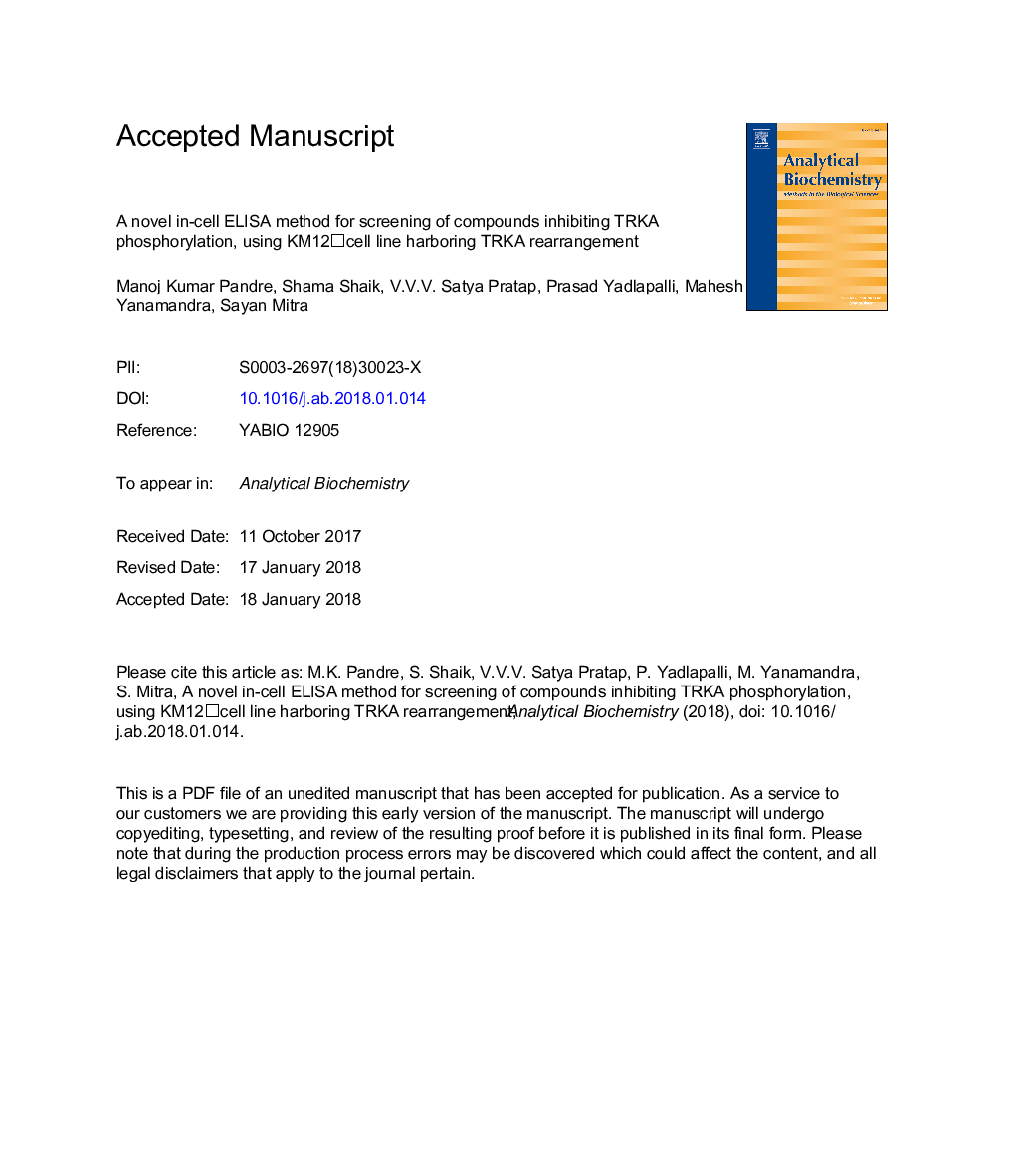| Article ID | Journal | Published Year | Pages | File Type |
|---|---|---|---|---|
| 7557015 | Analytical Biochemistry | 2018 | 25 Pages |
Abstract
Tropomyosin-related kinase A (TRKA) fusion was originally detected in colorectal carcinoma that had resulted in expression of the oncogenic chimeric protein TPM3-TRKA. Lately, many more rearrangements in TRK family of kinases generating oncogenic fusion proteins have been identified. These genetic rearrangements usually result in fusion of cytoplasmic kinase domain of TRK to another gene of interest resulting in constitutive kinase activity. Estimation of TRK inhibitor potency in a cellular context is required for drug discovery programs and is measured by receptor phosphorylation levels upon compound administration. However, since a large chunk of the TRK protein is lost in this rearrangement, it's difficult to set up sandwich ELISA for detection of receptor phosphorylation in any cell assay harboring these fusion proteins. In order to address this issue, we developed a novel and robust in-cell ELISA method which quantifies the phosphorylation of TRK kinase (Tyr 674/675) within the KM12â¯cells. This cell based method is more versatile & economical than conventional ELISA using engineered overexpressing cell line and/or western blot methods. Performance reliability & robustness for the validated assay were determined by %CV and Z factor in assays with reference molecule larotrectinib. This in-cell ELISA method can be used with any TRKA rearranged oncogenic fusion cell type and can be extended to other TRK isoforms as well. We have used this assay to screen novel molecules in KM12â¯cells and to study pharmacodynamic properties of compounds in TRKA signaling.
Keywords
Related Topics
Physical Sciences and Engineering
Chemistry
Analytical Chemistry
Authors
Manoj Kumar Pandre, Shama Shaik, Veera Venkata Valluri Satya Pratap, Prasad Yadlapalli, Mahesh Yanamandra, Sayan Mitra,
